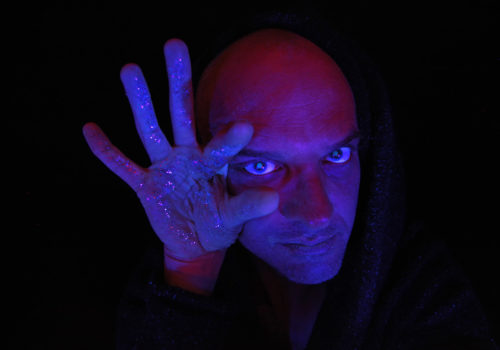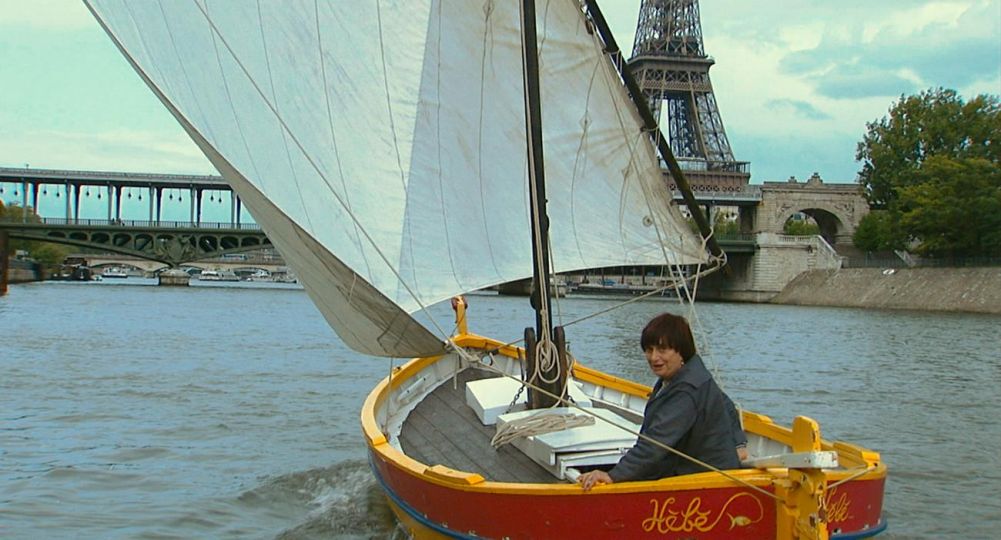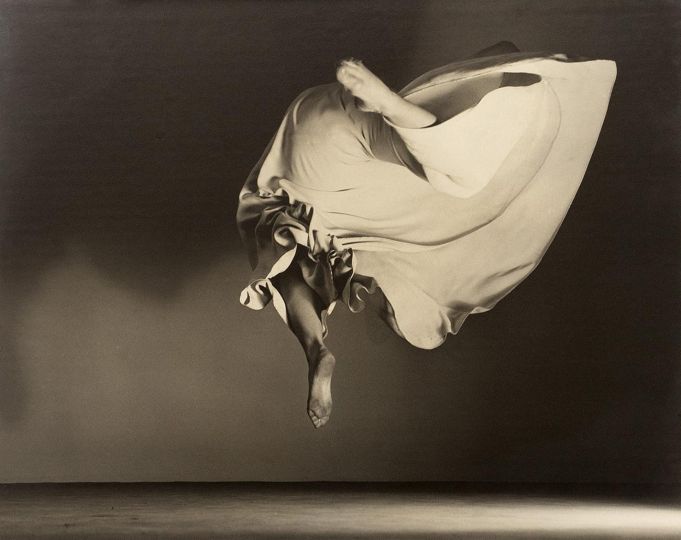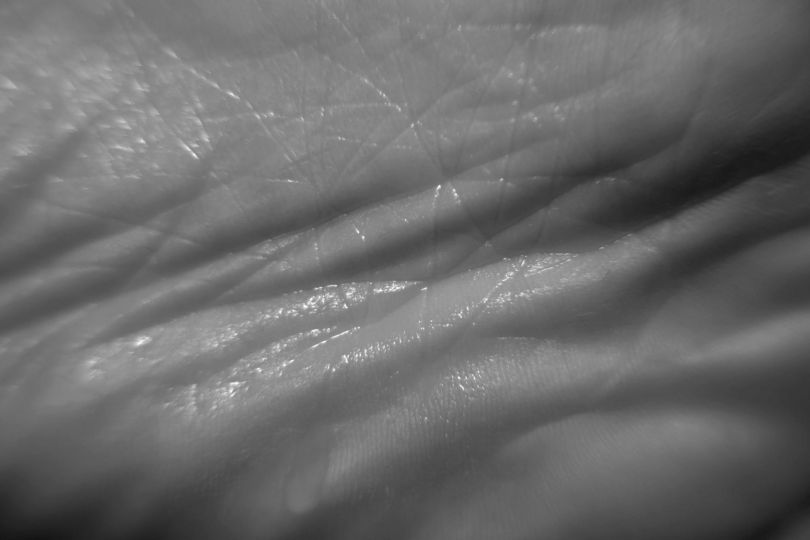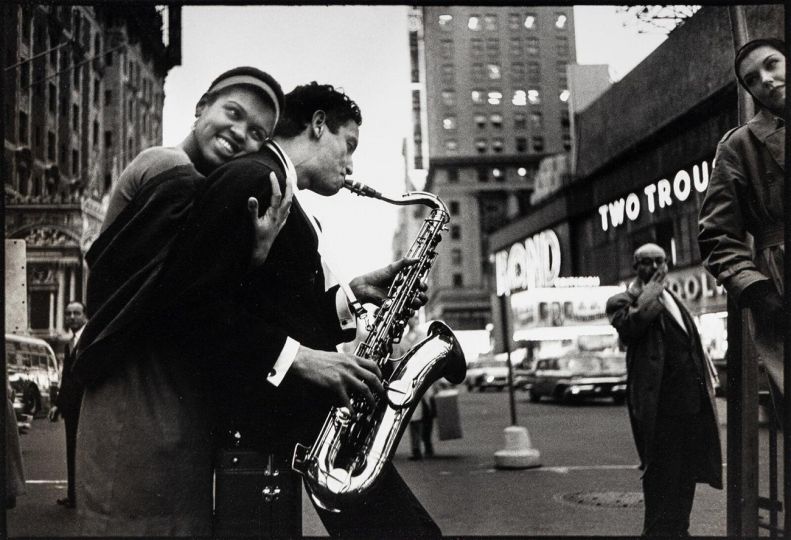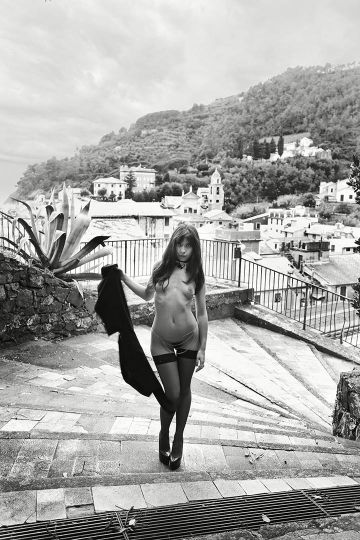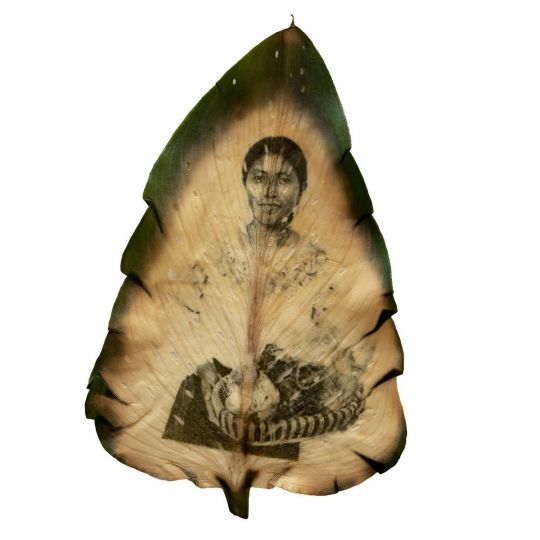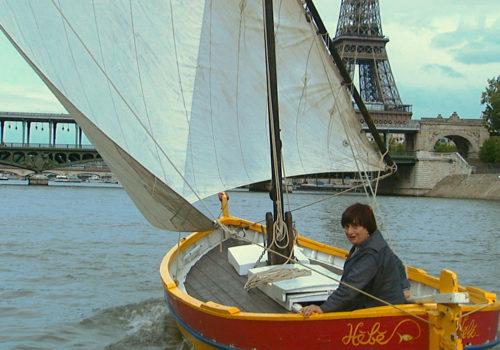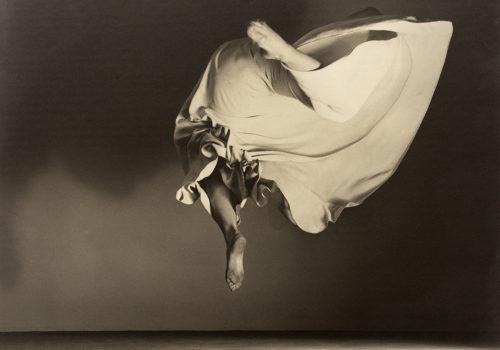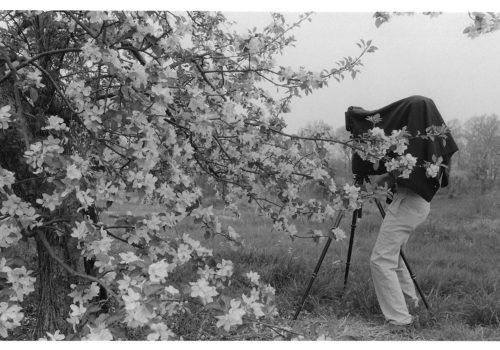The art and personality of Boris Eldagsen cannot be described in just one sentence – it is far too complex and multilayered. Perceiving photography and light imparts a sense of mystery: this has become Eldagsen’s trademark over the years.
He has lived and travelled the world, has been one-half of the artist duo Boris & Natascha for many years, and holds a major private collection of books on psychoanalysis, ghosts, and the paranormal.
After slowly getting to know his artworks and digging deeper into its core, I recently learned about his upcoming photo & light & music installation, planned to open during this year’s Rencontres d’Arles. And we started talking… Here comes the latest “What’s New?”
Nadine Dinter: During your artistic career you have gone through various phases and worked with a variety of media. On Facebook I recently saw that you used to paint and draw a lot. When did you start and when did you decide to switch sides – to photography?
Boris Eldagsen: I started drawing and photographing when I was 16, it was a parallel development. But as drawing was a lonely activity and photography was not (I started with staged photography), I decided to concentrate on photography in art school. I also liked that photography looks more real than drawing. With photography you could convince anybody that something really existed; drawing never had this psychological impact. But drawing was good as an artistic foundation, because it taught me to trust the process and how to develop a composition.
Your studies of photography, of visual artists, and fine art took you from Mainz to Prague to India. Why India? How did your time there influenced your way of working as an artist?
BE: I wanted to see other realities and India felt like another planet. Growing up in the 1970s, my idea of India was influenced by TV and books. In my imagination it was full of sex gurus, tigers, temples, and burning corpses. I had no real idea of where I was heading to. It was a big experiment of self-discovery. I took the initiative and wrote letters to 20 Indian art schools. One of them, Sarojini Naidu College in Hyderabad, was willing to have me as a guest student. So far I have been the only European art student to attend this postgraduate art school. Arriving in India in 1994, there was no internet but chaos on the streets, leprosy-struck beggars on wheeled boards, and a plague pandemic. In Hyderabad, Hindus and Muslims were fighting for political power, and I soon realized that I had no clue about their traditions. Even though I prepared myself as well as possible, learning Hindi at my university before leaving for India, I realized immediately upon arrival that the local languages were actually Urdu and Telugu.
Philosophically, I developed an interest in archetypes back then. What connects cultures and religions? What is our psychological makeup as human beings?
On a self-experience level, I had my first lockdown then – before even knowing that the word existed. Living with an Indian family whom I met in a train, I tried to adapt to their apparent non-existent time management, which turned out to be utterly frustrating for me, because nothing ever happened. But after I overcame this frustration and let go of my expectations, I gained a profound inner calmness.
Aesthetically, I developed the groundwork for what I do today. I started with night photography in India. During the day I was always at the center of attention, the streets were too crowded to get the composition right, and I was too shy to work with the people. At night, I blended in with the shadows and could concentrate on light and composition. When I returned to India to show at IPF Hyderabad and the Kochi Biennale in 2018, I realized that my photos look like a typical Indian night: lots of black with abundant colorful light spots.
You also have a degree in philosophy, and when looking at your art, one can clearly see that most of your work deals with a world beyond reality. Is there a particular philosopher or philosophy you have been particularly inspired by?
BE: My first philosophical interest was in aesthetics, which I started studying on the side, parallel to pursing an art degree. But then epistemology, anthropology, and ethics became much more interesting for me, followed by psychology. I like contradicting theories, antipodes like Epicurus and Plato, Nietzsche and Kant. They all defined reality differently. We are still not able to define it; its core remains a mystery. This is one of the reasons why I’m not interested in documentary photography. I find it more interesting to describe the mystery of reality with my photography.
It was Nietzsche and Kierkegaard who sparked my interest in psychology. They looked inside themselves and paved the way for a new scientific discipline to emerge. Jaspers, a 20th century German psychologist and existentialist philosopher, was my next milestone. He was looking for chiffres, symbols that represent the psychological DNA of humans. Carl Gustav Jung took this idea further with his idea that archetypes shape our collective unconscious. He saw them at work everywhere, also in the occult and mystic traditions. Joseph Campbell drew from this and developed the journey of the hero, a blueprint for storytelling based on analyzing the structure of ancient legends. His friend George Lucas put this formula into practice with Star Wars.
Today, I am floating between those worlds and traditions. I continue to pursue my studies on my own. I recently bought myself an encyclopedia from the 1960s titled Man, Myth & Magic, which connects the cultural dots from an anthropological and sociological perspective. I also inherited the huge library of my friend Dr. Thomas Knoefel, who was a leading German expert in the occult. Check out my Instagram account – from time to time I post excerpts from his occult library there.
You describe yourself as a “light artist.” Explain to us the difference between “photographer” and “light artist” – as both are light-based kinds of art…
BE: When I was teaching at the art academy in Melbourne, Australia, most Australian curators actually saw my work as being “heavy,” not “light.”
But joke aside – I don’t describe myself as a light artist. I usually call myself an “artist, working with photography.” Especially because I also work with video and installation. I don’t call myself a photographer, to show that I am not interested in depicting the visible, as most photographers do. My interest is in representing the invisible experience of being human, in triggering emotions and memories in the viewers.
I like the idea of “light-based art” – light is what I work with in photography and video. Physically, light is everywhere, even in the “dark” universe. Objects and light only become visible if they are colliding. It’s my job that they collide at the right time and place. In my artistic theater, light is one of my lead actors.
Your latest project, opening on 5 July at Bisous in Arles, is called The Rabbit Hole. Is that a reference to Alice in Wonderland and the White Rabbit, or what does the title refer to?
BE: The location actually led me to the title and the overall work. This is a unique made-to-measure installation, which was set up to create the highest synergy between location and work.
The exhibition space is a fascinating place. A huge staircase leads down to a windowless basement, which is divided into large and a small room; next to the small room is a tiny staircase leading into a dead-end. Visiting the location for the first time immediately gave me a sense of what Alice must have felt, falling down the rabbit hole. Alice was led into the depths of the earth and beyond reality. Likewise, Tanvir and I want to lead viewers into a different, an inner, timeless reality. “Going down the rabbit hole” is an idiom that describes this very well.
The exhibition is a joint project with Bangladeshi artist Tanvir Taolad, with whom you first collaborated with in 2018/2019 during the Kochi-Muziris Biennale. Where did you first meet and what is it like, creating such a monumental art installation across the globe during a pandemic?
BE: In 2014, I became friends with the Bangladeshi artist Sarker Protick at a photography festival in Dortmund. He introduced my work to Pathshala South Asian Media Institute, where he was teaching. Tanvir studied there at the time. In 2015, Tanvir curated my work for a Pathshala group show, and I was deeply impressed by the originality of the curation and his deep understanding of my work. We started to collaborate over the internet in May 2017. Since then, I have only seen him twice in person: in 2018, when I participated in the Chobi Mela festival in Dhaka, Bangladesh; and when we installed the work at the Kochi-Muziris Biennale. But this is 2021 and the internet has been around for three decades. Collaborating online, over a huge distance, is our normal workflow.
Our co-curator and producer Carine Dolek has also been a great help. She scouted the location and took all the measurements and photos I needed to make the wallpapers, flags, and prints fit to the location. She is our helping hand on site.
Tell us a bit more about this upcoming show.
BE: This work is not about a specific social, religious, or political problem, but rather addresses the origin of all issues and problems: the human condition. It is about our timeless aspects and the underlying conditions of suffering and hope, and their reverberations in time and space.
You could also see our installation as a 3D-representation of Sufism, a trippy memento mori, or as Tropical Gothic. For sure, we travel to the outer limits: inside & outside, here & beyond, conscious & unconscious, heaven & hell. We bring together Western and Eastern approaches of defining the circle of life.
Roger Ballen describes our work as “truly unique, unforgettable, and above all powerful. […] Boris Eldagsen and Tanvir Taolad photographs take us to the other side of the mind, to the peripheries of the universe. We are not certain whether we are seeing the artist’s dreams or a mirror of our deeper state of consciousness.”
We have a very particular way of creating our images. Our process starts with pictures taken from our archives, to which we then experimentally apply our analogue and digital skills of fusing and condensing photographs. Like alchemists, we destroy photos to create images that dig deeper into the human condition. We use acid, cutters, water tanks, projections, and apps. A photo undergoes multiple loops of production until it is finished. As neither Tanvir nor I share what we exactly do with a photo, nobody knows how a single image has been made.
Why Arles? And do you feel that we all need to go through some kind of “rabbit hole” to re-enter a normal world after COVID-19 again?
BE: I am interested in the timeless aspects of the human psyche. My work is not related to current events yet at the same time it is related to all events. I have also always questioned what people call “normal.” So I can’t give an answer that would make sense for me. But Arles does, and so does showing the work in Arles.
Since I won the Prix Voies Off in 2013 with my work THE POEMS, I have been returning to the Rencontres and Voies Off festivals every July. It’s a magical gathering of photo freaks and experts, outlaws and flirts. It’s an annual meet-up with artist friends from around the globe. As long as the festival and I exist, you will find me there.
Having said this, I also want to show RABBIT HOLE in other site-specific versions; if you’re interested, send me an email. Doesn’t matter where you are – I love to travel. I also have work in a Korean festival this summer, and it’s a bummer that, due to coronavirus restrictions, I won’t be able to travel there.
Where does your inspiration come from? Dreams? Life? Psyche?
BE: All of it and more. Everything can be an inspiration. A song, a movie, a gesture. One of my last inspirational moments was a gig by the Brazilian performer Kupalua. She had three breasts and looked like a mix between an ancient goddess and an alien, singing in bright laser light. She was wearing a butt plug with a mirror and used that to reflect a green laser back into the audience. One year later, I shot a video with her: The Marriage of Yan & Ying. Two of her post-human artist friends, Aun Helden and Ectocorp, then wanted to work with me: one work led to the next. This kind of thing happens often.
But as the journey of an artist is an inner one, one of becoming more and more conscious about your inner forces, these outside inspirations are only valid to pursue when they reflect back on your inner journey. The post-human movement is for sure connected to my existential quest.
What is your advice for the new artist generation, craving to enter the art and photography scene?
BE: “Know thyself,” as it was written above the entry to temple of the Delphi oracle. Draw a mind map of all the creative and cultural things you have pursued – why did you start, why did you stop?
Which are the songs and books and movies and art works that have affected you and why? What are your interests and skills? Once you have put all of this on a big table, you will see the connections. These connections are what drive you. Then go deeper, make them become your new themes and subjects.
Develop resilience – you will need it.
Connect to other people – you are stronger in a team.
Balance out your life. You need things that give you energy – foster them.
Laugh.
Find your own way.
Make sure to follow Boris on @boriseldagsen
THE RABBIT HOLE
Boris Eldagsen & Tanvir Taolad
From 4 July to 29 August 2021
Curation: Boris Eldagsen & Tanvir Taolad & Carine Dolek
Opening: Monday, 5 July 2021, at 6pm
Location: Bisous, 33 Rue de la République, 13200 Arles
Open hours: every day from 10am to 7pm

